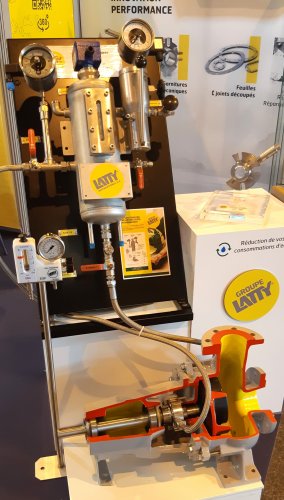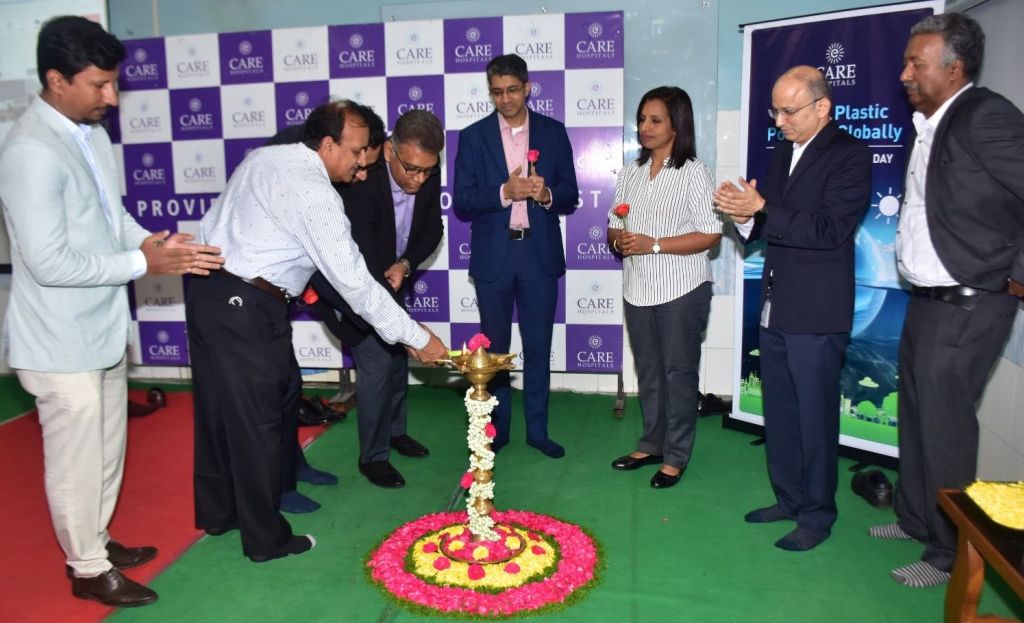GROUPE LATTY, a member of French Fab, has been the French specialist in industrial waterproofing for over a century. Latty supports its customers through the technical innovations demanded by an increasingly competitive market. With this in mind, Latty has been committed to protecting the environment for several years now. Saving resources is one of the major challenges facing industry today. Latty has developed the LATTYlub range of auxiliary systems, which now make it possible to reduce water and energy consumption, while increasing the lifespan of equipment.

The auxiliary systems in the LATTYlub range make it possible to control and monitor the servo-control of sealing systems, simultaneously maintaining them under pressure, thermoregulating them and lubricating them in the chemical, pharmaceutical, food and paper industries, and many others, particularly in the field of nuclear energy and hydroelectricity.
The features of the LATTYlub range enable optimisation and consequent reduction of water and energy consumption. By reducing the risk of leaks and emissions, LATTYlub equipment helps to protect the environment as well as personnel. They increase the lifespan of sealing systems, making installations sustainable.
The auxiliary systems can be used for all models and types of single or double mechanical seals mounted on process pumps, reactors, filter dryers, etc.).
A wide range covering many applications
LATTYlub Pot lubrication reservoirs can be used to regulate and control the pressure and temperature in double mechanical seals and agitator housings, to improve the service life of this equipment. This ready-to-use system ensures the protection of personnel and equipment while extending maintenance time between two interventions. Its use in a closed loop drastically reduces dam circuit consumption.
The LATTYlub Flowcontrol flow controller is designed for applications where an uninterrupted flow of water is required to ensure the cooling and lubrication of sealing systems. It also optimises water consumption by detecting and locating faults in sealing systems. Monitoring is simplified with a visual flow indicator or with the installation of a sensor. At the request of our customers, different configurations are possible in terms of materials, ergonomics and design to ensure our equipment can withstand high pressures and temperatures.
The LATTYlub Thermoflow thermostatic actuator is installed on the barrier fluid outlet of the double mechanical seal to maintain an optimum quantity of fluid on the faces. By allowing the fluid to be renewed when the temperature in the mechanical seal becomes too high, it drastically reduces the consumption of the fluid needed for cooling. This entirely mechanical system is not affected by pressure variation. It is preset to a chosen temperature and operates up to 120°C depending on the model.
The LATTYlub Gascontrol controller-regulator is a supply system for seals requiring a gas supply. Its cooling action guarantees the integrity of the system and the gas barrier generated prevents product emissions into the atmosphere. It optimises the flow of air, nitrogen or other gases. It monitors system efficiency and protects equipment from the risk of deterioration of the seal in place.
Tested, reliable equipment
The new LATTYlub auxiliary systems range is part of the GROUPE LATTY’s research and development policy, to which it devotes an average of 5% of its annual turnover. The GROUPE LATTY’s products meet stringent requirements from design to manufacture, including the test phases carried out in its in-house test laboratory at the plant in France or in collaboration with organisations and institutes. Latty's technical teams install and maintain the equipment on site. The equipment is pre-tested and validated at the factory, enabling it to be commissioned safely. In this way, the Latty Group has been guaranteeing total reliability to its industrial customers for over a century.





